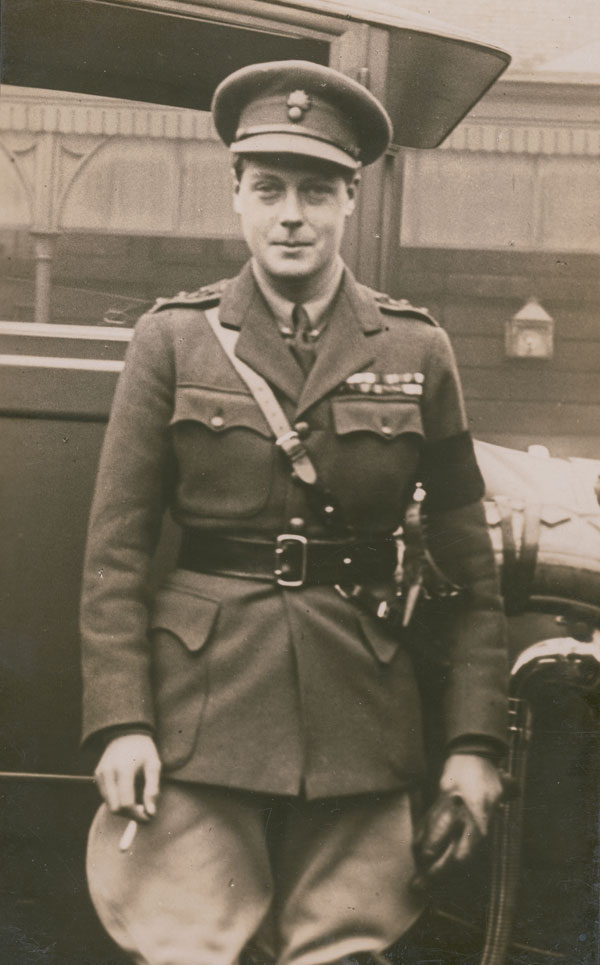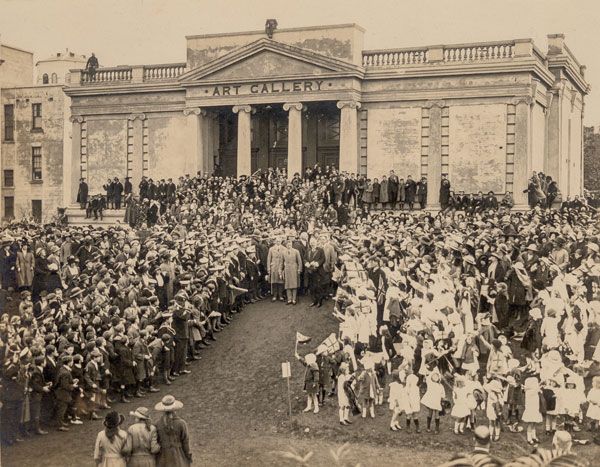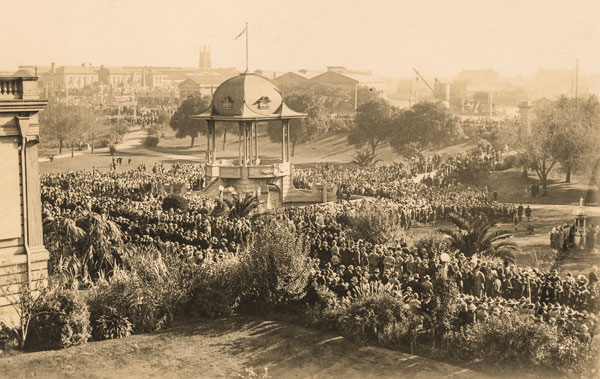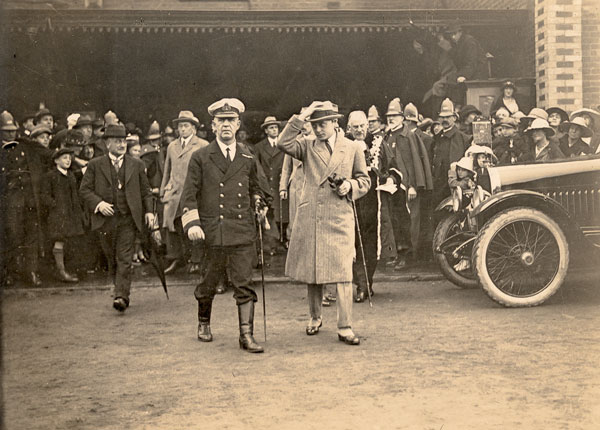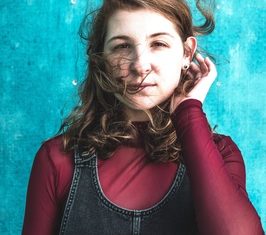History repeated
Dashing young Edward, Prince of Wales, visited Geelong for 90 minutes in 1920, met thousands of local people, named a boulevard and sold the town out of pies and pastries.
By Greg Wane
BROWSING in an antiques shop in Melbourne recently I came across a box of old photos, among them an intriguing set of pictures – unmistakably shot at Geelong’s railway station and Johnstone Park. I was immediately intrigued.
Pencilled on the back was the brief description: “Prince of Wales visit”.
One of the photographs showed Edward Prince of Wales emerging from the Geelong Railway Station accompanied by Geelong mayors of the day.
Some detailed research of old newspaper files revealed that the Prince visited Geelong during a Royal tour in June 1920 for just an hour and a half.
Throughout the 1920s, Edward, as Prince of Wales, represented his father King George V on 16 Royal tours to various parts of the British Empire between 1919 and 1935. His good looks, travel experience and unmarried status gained him much public attention and at the height of his popularity, he was the most photographed celebrity of his time.
The Prince arrived by train from Melbourne at 11.15am on Wednesday 2 June. He stepped from the rear observation carriage onto the Geelong platform where he was met by Geelong City Mayor Howard Hitchcock and the mayors of Geelong West, Cr R Rosenberg and Newtown and Chilwell, Cr D Laidlaw.
Outside the railway station hundreds of people cheered as the Prince appeared. He was accompanied by the Royal Australian Navy’s Captain M. Robbins on an inspection of a naval guard of honour. About the same time two Australian navy ships, HMAS Sydney and Encounter, fired a Royal salute from their anchorages in Corio Bay.
The motorcade proceeded past Johnstone Park where loud cheers went up from the 7000 school students representing most of the primary schools in the Geelong district. The procession continued along Gheringhap Street to the town hall where the lady mayoress Mrs Hitchcock presented His Highness with a souvenir gift of his visit to Geelong: A solid gold paperweight embellished with a representation of a fern leaf, a kookaburra, a kangaroo, emu a boomerang and the City’s coat of arms.
The Prince then moved into Johnstone Park where he performed the official duty of naming the main footway through the park between Gheringhap and Fenwick streets. At the request of Mayor Hitchcock the Prince declared the footway the “Prince of Wales Boulevard.”
Newspapers of the day reported that the Prince had said that the city of Geelong had paid him a great honour.
While the Prince moved among the people in the park, a large crowd standing along Railway Terrace rushed across garden beds into the park to get a view of the Prince. The police were powerless against the more than 300 people who surged into Johnston Park preventing the Prince from meeting the assembled school children. This part of the program was quickly abandoned and the Prince was escorted back to his motor car.
Earlier in the morning the mayor Cr Hitchcock had distributed 7300 commemorative medals to the school children.
The Prince was then driven via Malop Street to the Moorabool Street wool showroom of Dennys Lascelles Limited where he viewed an exhibition featuring Geelong’s manufacturing and industrial capabilities.
At the exhibition, the Prince was immediately attracted to an electric sheep shearing machine demonstration. However as the Royal party approached there was a loud crack and the shearing machine stopped. The electricity switch to the machine had fused leaving shearer Harry White unable to demonstrate shearing to the Prince.
The final stop on the Princes’ 90-minute schedule was the Little Malop Street rooms of the Returned Soldiers Club.
The motorcade then made its way via Little Malop, Moorabool, Ryrie and Gheringhap streets, with the Prince standing in the open topped, chauffeur driven car waving to the hundreds of people that had lined the parade route back to the railway station.
On return to the station and before boarding the train to Colac, the Prince moved away from the official party to personally thank his Geelong chauffer Harold Farrell who drove the mayoral car during the Geelong visit.
In the 24 hours leading up to the Prince’s arrival Geelong’s police superintendents Robinson and Selwood had brought in, by an earlier train, an extra 120 constables from stations as far away as Bendigo, Maldon, Warrnambool, Castlemaine and Casterton to handle to large crowds expected at Geelong.
City cafes had closed during the morning, and when eateries finally opened at 1pm after the Prince’s visit, crowds of people flooded in for lunch. The ABC Cafe in Moorabool Street, one of Geelong’s largest, was forced to shut its doors after a short time because of the large crowd already inside.
Police moved in when there were fears the glass doors and windows could be damaged in the crush.
Because of the difficulty of obtaining meals in cafes, there was a rush on pies and pastries – a more convenient food – which forced hundreds of people to eat their lunch in the streets.
Teachers were desperately trying to arrange lunches for hundreds of school children who had travelled to Geelong from country schools. This had put further pressure on the pie and pastry supplies and by 2pm retail records had been broken and there was not a flake of pastry left in Geelong.
Heavy showers in the morning prior to the prince’s arrival threatened to disperse the crowds but people remained defiant against the weather and stayed at their vantage points around the city, getting a soaking.
Few city shops that remained open during the morning did any business, but the rain proved a windfall for the city’s drapers with many selling out of umbrellas as the rain clouds approached.
Sixteen years after his visit to Geelong, on the death of his father George V in January 1936, Edward Prince of Wales ascended the throne to become King Edward VIII.
Soon after, he made headlines when he chose to abdicate the throne in December 1936 to marry American divorcee, Mrs Wallis Simpson. Edward had reigned for just 326 days. He died in Paris in 1972.


